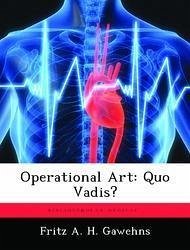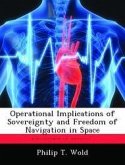Operational art, subject to a transformation of meaning over time, is today more a vaguely defined phenomenon than a clearly defined term. On the whole, the concept of operational art is the result of the hierarchical organization of warfare derived from practical experience rather than the product of a thorough theoretical analysis. This study is designed to empirically approach the nature of the interpretation of operational art through the lens of military history. The focus is an examination of operational art against a background of era-related historical experience to determine the consistency and change in operational art since World War I and the factors responsible. The application of this analysis perhaps will provide practical answers to the challenges of modern warfare. The industrialized, modern war is characterized by a reduction in the significance of purely military factors. Simultaneously, the dependence of warfare on the economic and technological potential of society has increased. The destruction or attrition of military resources is only one factor impacting operational art and its contribution to the decision of war. Out of the many considerations, time, space and technology are the greatest influence on the determining factors of operational art. This study demonstrates that the concept of operational art cannot be developed from the nature of war, as is the case with strategy and tactics. Operational art has undergone a considerable change since WW I in terms of meaning and interpretation. While tactical and strategic functional fields can be clearly separated in terms of concept and notion, this does not apply to the conduct of operations. Operational art depends, on the one hand, on the conditions tactics offer, while; on the other hand, it is dominated by strategic circumstances. The reality of a future war coupled with strategic conditions and goals is subject to permanent change. Thus, operational art has to cope with external questions
Hinweis: Dieser Artikel kann nur an eine deutsche Lieferadresse ausgeliefert werden.
Hinweis: Dieser Artikel kann nur an eine deutsche Lieferadresse ausgeliefert werden.








